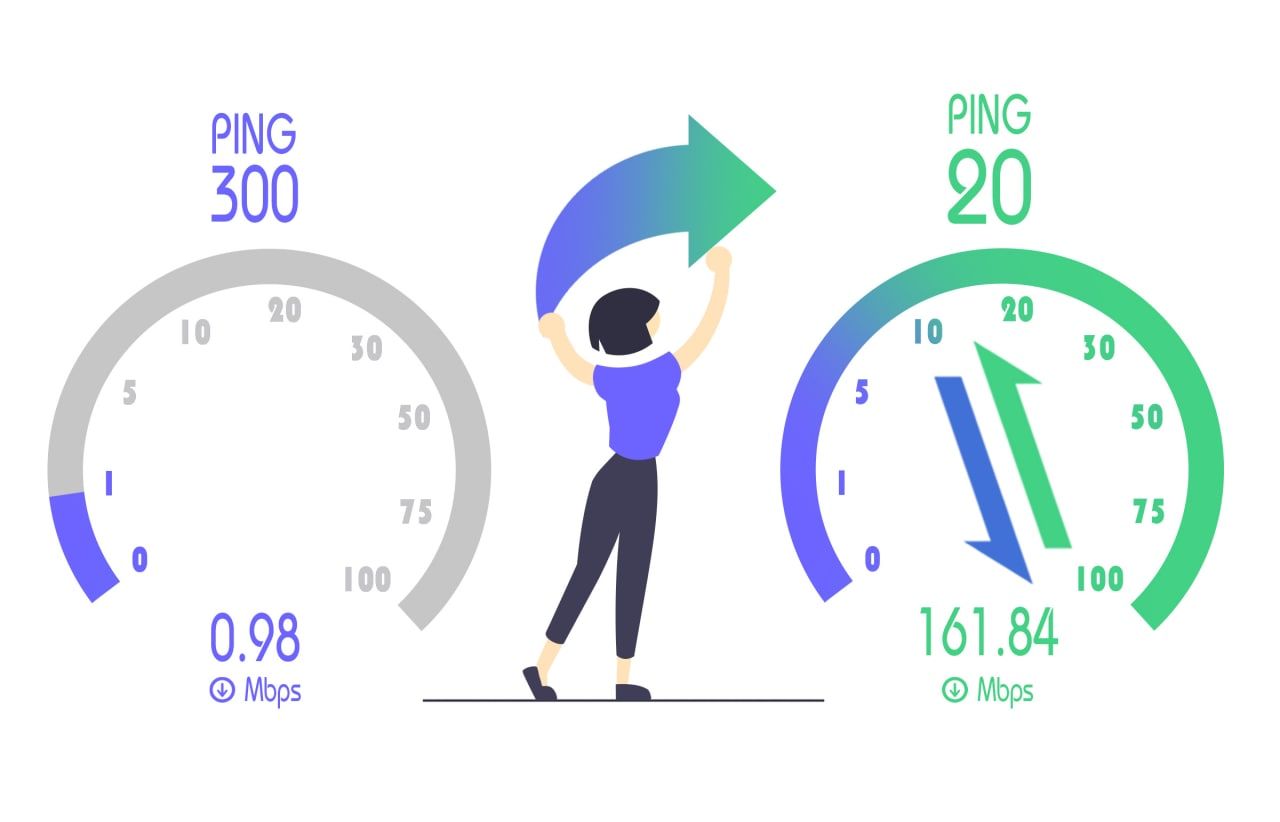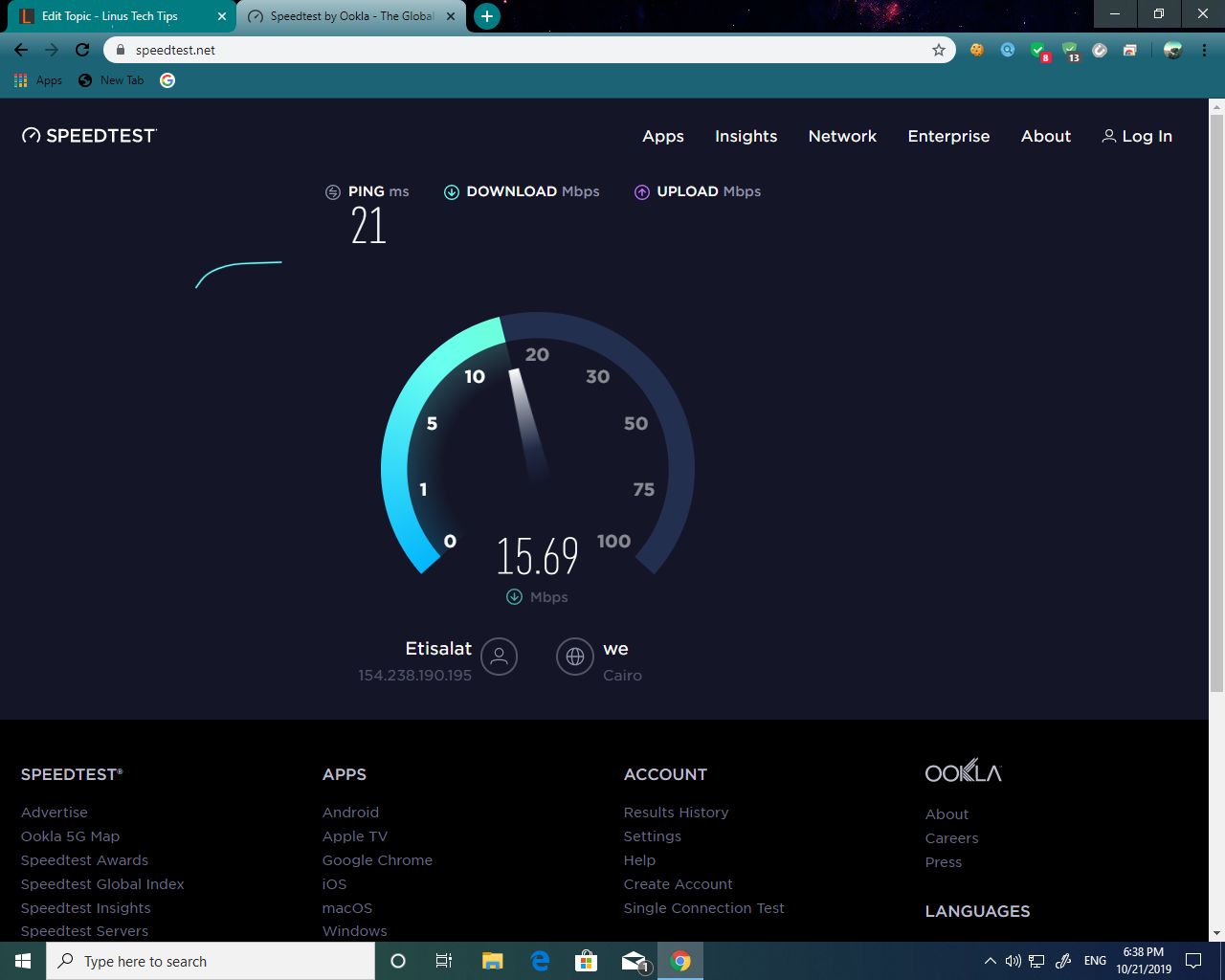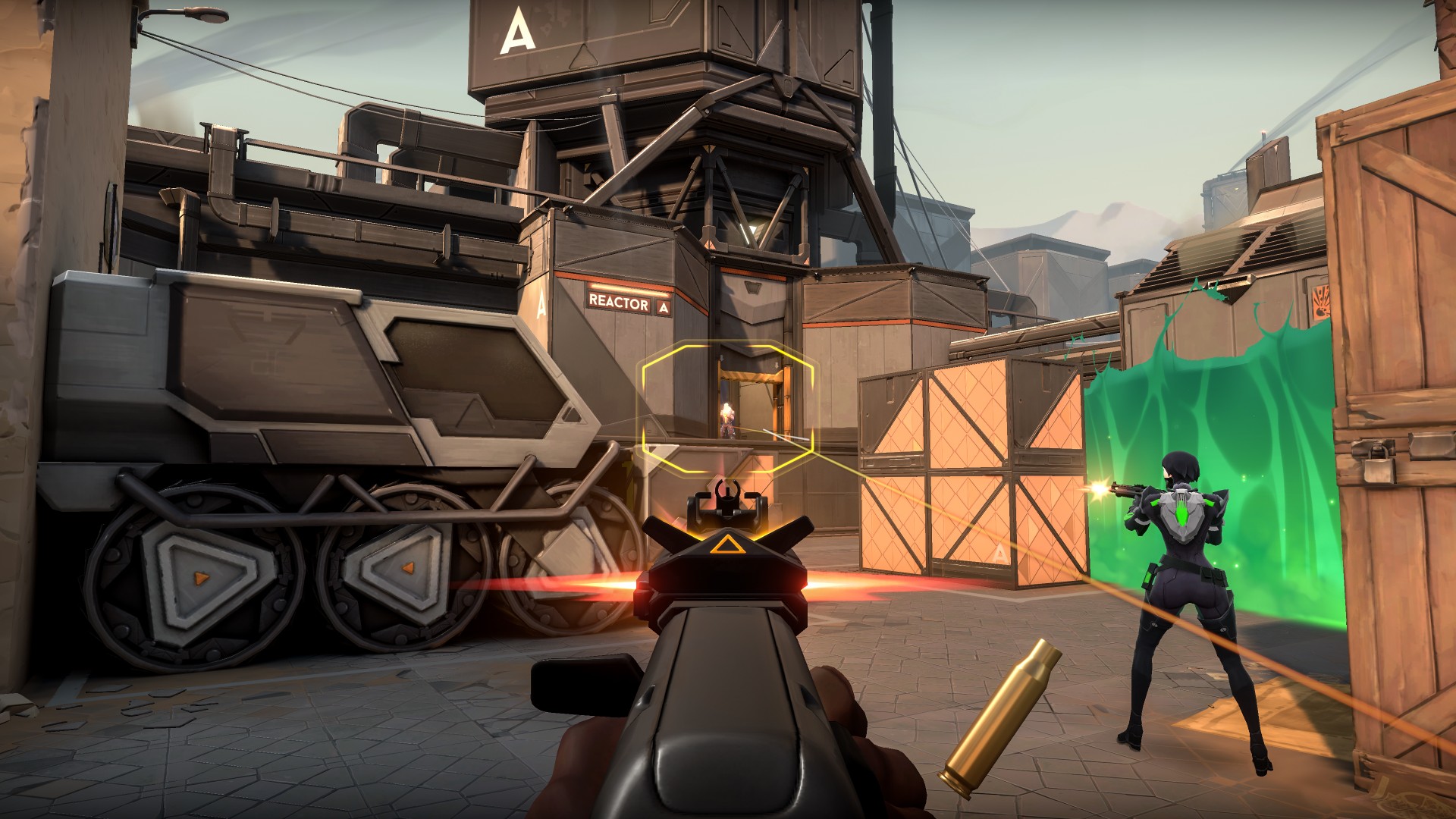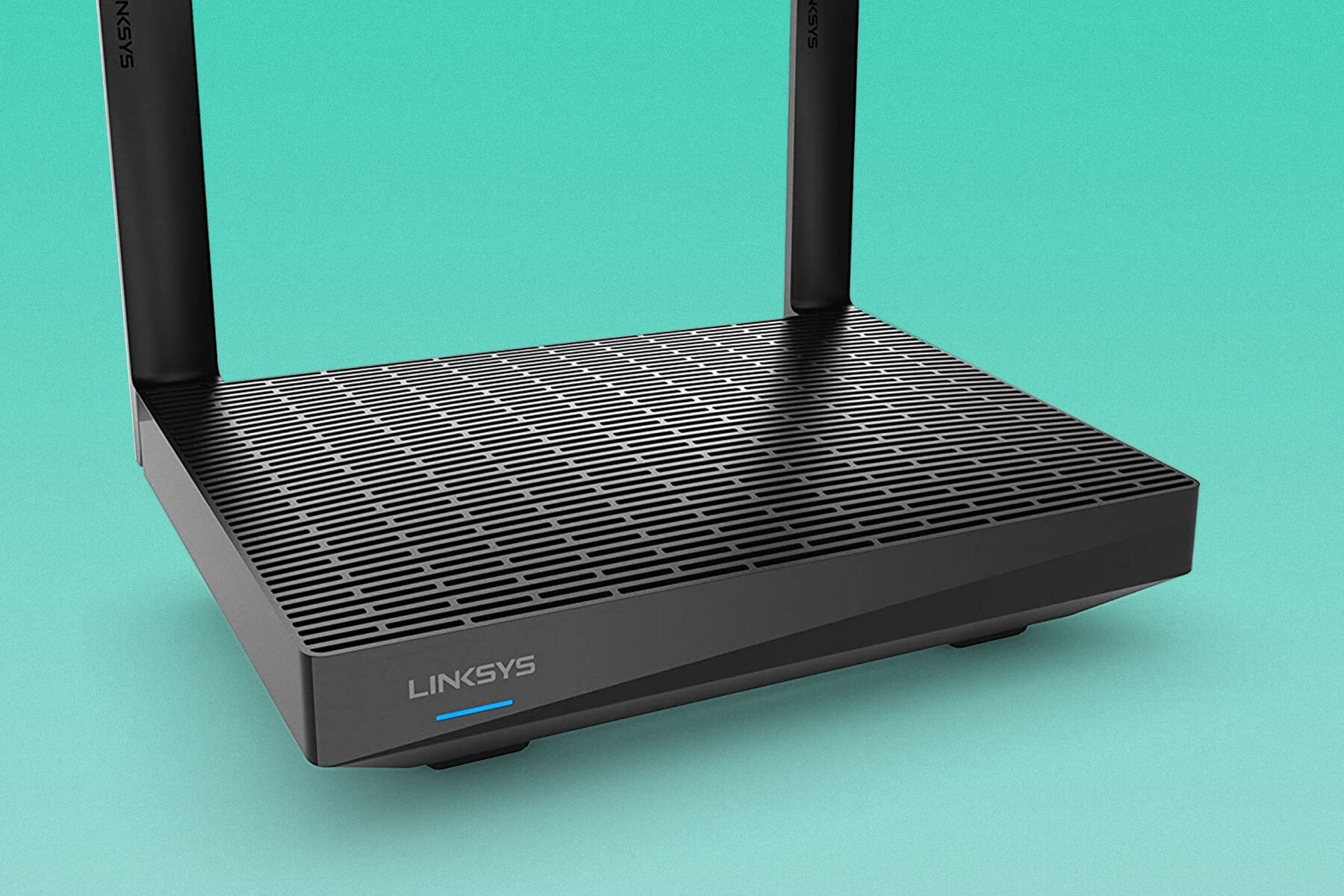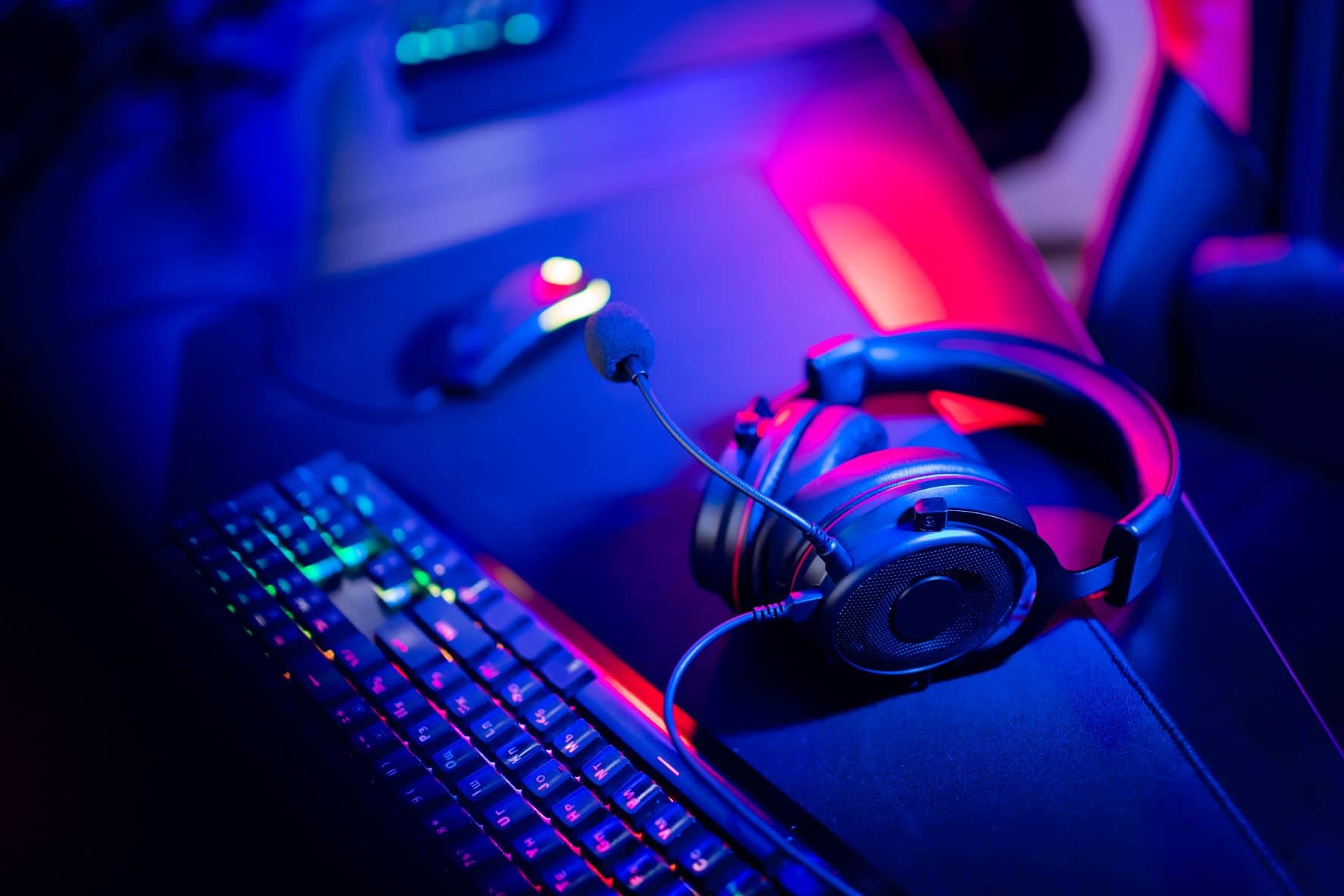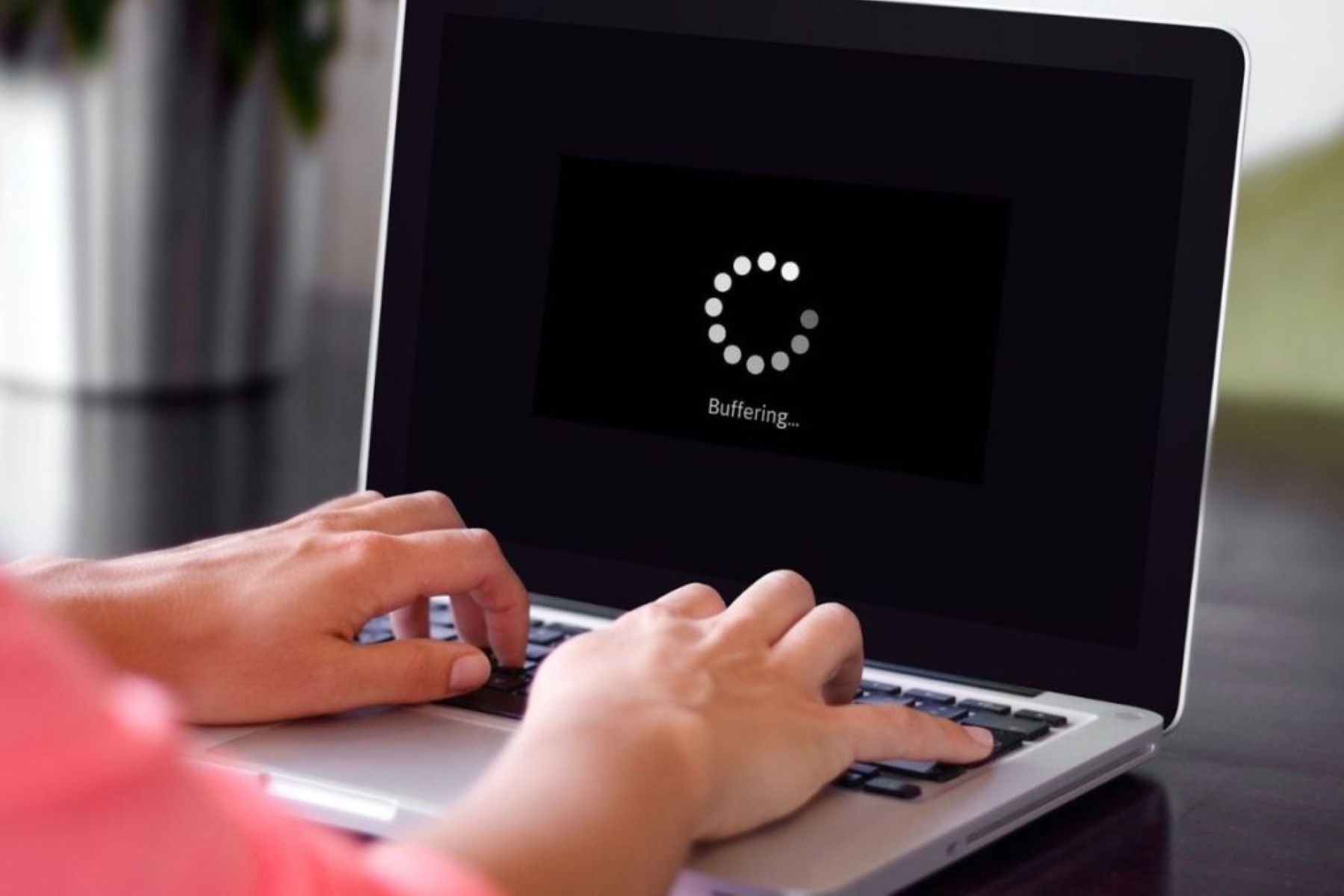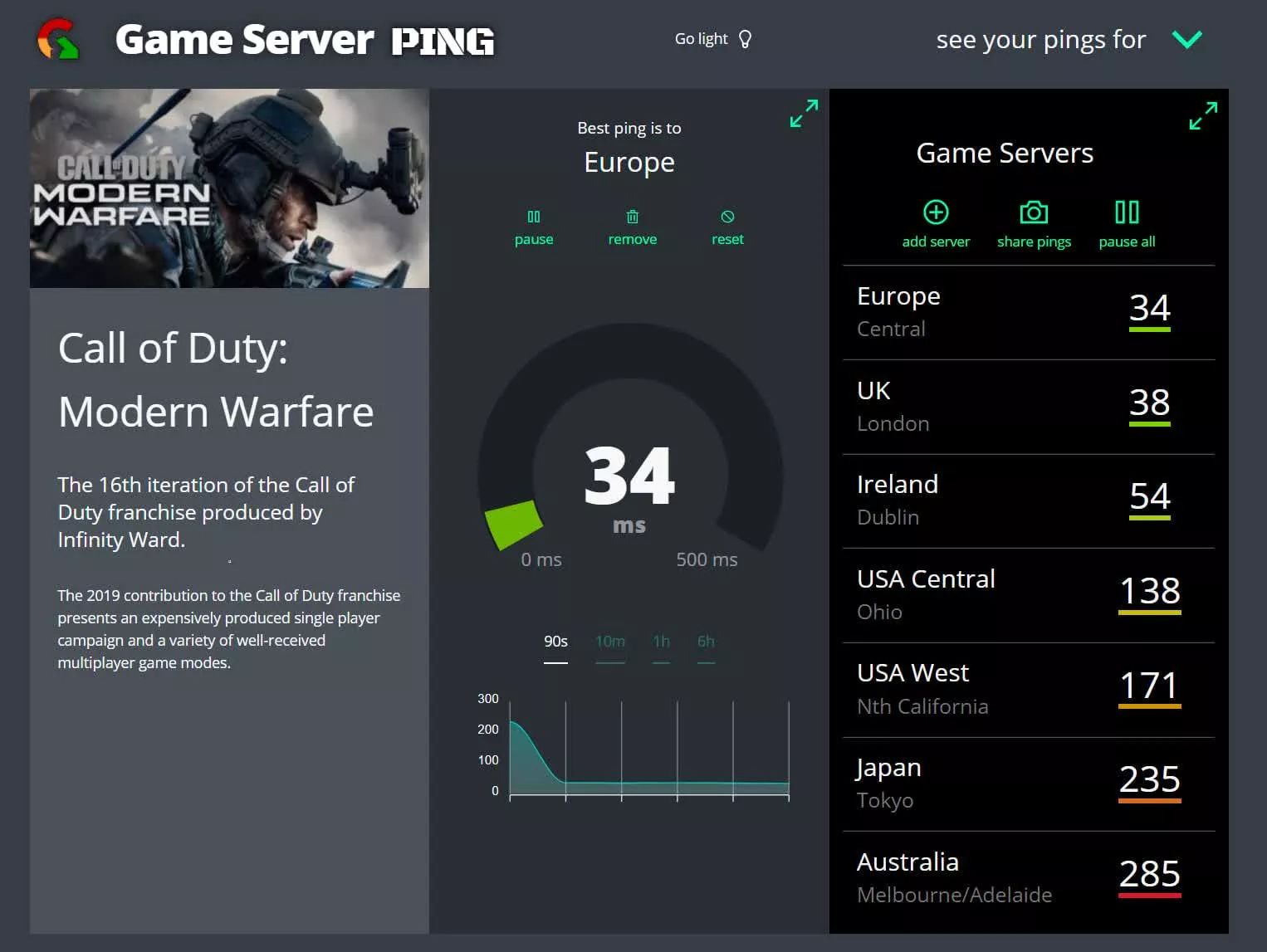Understanding Ping in Online Gaming
When it comes to online gaming, achieving low ping is crucial for a smooth and enjoyable gaming experience. But what exactly is ping? In simple terms, ping refers to the time it takes for data to be transmitted from your computer to the game server and back. It is measured in milliseconds (ms), with lower numbers indicating faster connection speeds.
To put it into perspective, imagine playing a fast-paced first-person shooter game. A high ping can result in delays between your actions and their effects in the game, leading to frustrating lag and even affecting your performance. On the other hand, a low ping ensures quick response times, allowing for seamless gameplay.
Ping is influenced by various factors, both within and outside of your control. One of the primary factors is your internet connection speed. If you have a slow internet connection, it will inevitably result in a higher ping. Additionally, the distance between your location and the game server also plays a role. The farther away you are, the higher the ping is likely to be.
Furthermore, network congestion and the load on the game server can impact your ping. During peak hours or when there are many players connected to the server, the increased traffic can lead to higher ping. This is why you may experience better ping during off-peak hours or when playing on less crowded servers.
Understanding the concept of ping is crucial for optimizing your online gaming experience. By comprehending how different factors affect ping, you can take proactive steps to reduce it and enjoy smoother gameplay. In the following sections, we will explore some effective tips for decreasing ping in online gaming.
Factors Affecting Ping
Several factors contribute to the ping you experience while playing online games. By understanding these factors, you can identify areas for improvement and decrease your ping for a better gaming experience.
1. Internet Connection Speed: The speed of your internet connection directly affects your ping. Faster internet speeds generally result in lower ping times. Consider upgrading to a higher internet package to enjoy a lower ping.
2. Distance to Game Server: The physical distance between your location and the game server can cause delays in data transmission, leading to higher ping. If possible, choose game servers that are geographically closer to you to reduce the distance data needs to travel.
3. Network Congestion: Busy or congested networks can result in higher ping. During peak usage times, more users are accessing the network, causing increased congestion and slower data transmission. Avoid playing games during peak hours to minimize network congestion and enjoy a lower ping.
4. Hardware and Network Equipment: Outdated or malfunctioning hardware can contribute to high ping. Ensure that your computer, modem, and router are up to date and functioning properly. Consider upgrading your hardware if necessary to optimize your gaming experience.
5. Background Applications and Downloads: Running resource-intensive applications or downloading large files while gaming can consume bandwidth and result in higher ping. Close any unnecessary background applications and pause downloads before starting your gaming session to reduce ping.
6. Wireless Connection: Wireless connections are generally more prone to interference and packet loss compared to wired connections. If possible, use a wired Ethernet connection for a more stable and reliable connection, resulting in lower ping.
By considering these factors and taking necessary steps, you can significantly decrease your ping and enjoy a smoother and more responsive online gaming experience. Let’s explore some effective tips in the next section to help you achieve a lower ping.
Tips to Decrease Ping in Online Gaming
Experiencing high ping in online gaming can be frustrating, but there are several effective tips you can follow to decrease your ping and improve your gaming experience. Let’s explore these tips below:
1. Improve Your Internet Connection: Contact your internet service provider to troubleshoot and optimize your internet connection. They may be able to suggest better packages or fix any connectivity issues that could be causing high ping.
2. Use a Wired Connection: Whenever possible, use a wired Ethernet connection instead of relying on Wi-Fi. Wired connections offer more stability and lower latency, resulting in reduced ping during online gaming sessions.
3. Close Background Applications: Close any unnecessary background applications and processes that are consuming bandwidth. This will free up resources and prioritize your gaming connection, leading to lower ping.
4. Adjust Your Game Settings: In the game settings menu, lower the graphics and resolution settings to reduce the strain on your hardware. This can help improve overall performance and decrease the ping you experience while playing.
5. Choose Servers Wisely: Select game servers that are geographically closer to your location. This reduces the distance data needs to travel, resulting in lower ping. Additionally, choose servers that have lower player populations to avoid network congestion.
6. Upgrade Your Hardware: If you’re consistently experiencing high ping, consider upgrading your hardware. This includes your computer’s processor, graphics card, and RAM. Upgrading to more powerful hardware can help improve your gaming performance and decrease ping.
7. Reduce Network Interference: Position your router away from other electronic devices that could cause interference, such as cordless phones or microwaves. Additionally, minimize using other bandwidth-intensive applications or devices while gaming to ensure a smoother connection and lower ping.
8. Use a Ping Reducing Software: There are various software applications available that claim to reduce ping by optimizing your network settings. Research and try out different options to find one that works best for your setup and decreases your ping effectively.
9. Limit Bandwidth Usage: Set limitations on other devices connected to your network to prevent them from consuming excessive bandwidth. This prioritizes your gaming connection and helps reduce ping by minimizing network congestion.
10. Monitor Ping and Optimize Settings: Use tools or in-game features to monitor your ping. This allows you to identify patterns of network congestion or high ping and make adjustments to your settings or server selection accordingly.
By following these tips, you can significantly decrease your ping in online gaming, resulting in a smoother and more enjoyable gaming experience. Experiment with different strategies to find the combination that works best for you and enjoy lag-free gaming sessions.
Improve Your Internet Connection
Having a reliable and fast internet connection is crucial for reducing ping in online gaming. Here are some steps you can take to improve your internet connection:
1. Contact Your Internet Service Provider (ISP): Reach out to your ISP and inquire about the available internet packages. They can provide information about higher-speed options that could reduce your ping. They may also be able to troubleshoot any connectivity issues you might be experiencing.
2. Upgrade Your Internet Package: If you’re currently using a lower-speed internet package, consider upgrading to a faster one. Higher internet speeds result in lower ping times, allowing for faster data transmission between your device and the game server.
3. Optimize Your Router Settings: Access your router’s settings and make sure it is configured to provide the best performance for online gaming. Ensure that your router firmware is up to date, and consider adjusting settings like Quality of Service (QoS) to prioritize gaming traffic.
4. Check for Signal Interference: Signal interference from other electronic devices can impact your Wi-Fi connection quality. Keep your router away from appliances like microwaves and cordless phones, as they can interfere with the Wi-Fi signal. Also, ensure that your router is placed in a central location for better coverage.
5. Invest in a High-Quality Router: If you’re using an outdated or low-quality router, consider upgrading to a more powerful one. A router with advanced features, such as dual-band capability or beamforming technology, can provide a more stable and efficient connection for reduced ping.
6. Use Ethernet Instead of Wi-Fi: For the best gaming experience, use a wired Ethernet connection instead of relying on Wi-Fi. Wired connections offer more stability and lower latency compared to wireless connections, resulting in lower ping.
7. Reduce Network Congestion: Limit the number of devices connected to your network, especially during gaming sessions. Bandwidth-intensive activities on other devices, such as streaming videos or downloading large files, can cause network congestion and increase ping. Pause or limit these activities to optimize your gaming connection.
Improving your internet connection is a crucial step towards decreasing your ping in online gaming. By following these tips, you can ensure a more stable and faster connection, leading to a smoother gaming experience with reduced latency and lag.
Use a Wired Connection
One of the most effective ways to decrease ping in online gaming is by using a wired connection instead of relying on Wi-Fi. A wired Ethernet connection offers several advantages that can significantly improve your gaming experience. Here’s why you should consider using a wired connection:
1. Stability and Reliability: Wired connections are generally more stable and reliable compared to wireless connections. They are less prone to interference and signal fluctuations, resulting in a more consistent and stable connection for online gaming.
2. Lower Latency: Wired connections typically have lower latency, meaning data travels faster between your device and the game server. This reduced latency results in faster response times and improved real-time gameplay, with minimal delays or lag.
3. Reduced Packet Loss: Wi-Fi connections are susceptible to packet loss, where data packets fail to reach their intended destination. This can lead to interruptions and delays in the game, causing higher ping. Wired connections have lower packet loss rates, ensuring smoother and more reliable data transmission.
4. Better Bandwidth Management: Using a wired connection allows for better bandwidth management. Wi-Fi connections are shared among multiple devices, which can cause congestion and increased ping in online gaming. With a wired connection, you have a dedicated line, enabling optimal bandwidth allocation for gaming purposes.
5. Minimized Interference: Wi-Fi signals can be affected by various sources of interference, such as other electronic devices or neighboring networks. By using a wired connection, you eliminate these sources of interference and ensure a more stable and interference-free connection for gaming.
To set up a wired connection, connect an Ethernet cable from your modem or router to your gaming device. Make sure the Ethernet cable is in good condition and properly connected. You may need to adjust the network settings on your device to prioritize Ethernet if it is currently set to Wi-Fi.
While using a wired connection provides numerous benefits, it may not be feasible in every situation. In cases where a wired connection is not possible, consider optimizing your Wi-Fi setup by ensuring a strong signal, minimizing interference, and reducing the distance between your device and the router. Using Wi-Fi extenders or upgrading to a higher-quality router can also help improve your Wi-Fi gaming experience.
By using a wired connection whenever possible, you can significantly reduce ping and enjoy a smoother and more responsive gaming experience. The stability, lower latency, and reduced packet loss offered by a wired connection prove invaluable for intense online gaming sessions.
Close Background Applications
Closing unnecessary background applications is a simple yet effective way to decrease ping in online gaming. When running resource-intensive applications or having multiple programs running simultaneously, it can consume valuable bandwidth and system resources, resulting in higher ping. Here are some steps you can take to optimize your gaming performance:
1. Identify Resource-Intensive Applications: Open your task manager or activity monitor to identify applications that are consuming a significant amount of CPU, memory, or network resources. These might include file-sharing programs, media streaming services, or downloading software.
2. Close Unnecessary Applications: Once you have identified resource-intensive applications, close them before starting your gaming session. This will free up system resources and bandwidth, allowing your game to utilize more of the available resources, resulting in lower ping.
3. Manage Startup Programs: Some applications automatically start when you boot your computer, running in the background and consuming resources. Disable or remove any unnecessary startup programs to prevent them from affecting your gaming performance.
4. Pause Downloads: If you have any ongoing downloads or updates, pause them during your gaming session. Downloads consume bandwidth, which can result in higher ping. Resuming them after your gaming session will ensure that you have a smoother and more responsive gaming experience.
5. Optimize Background Services: Some applications and services run in the background, even if you’re not actively using them. Disable or adjust their settings to minimize their impact on your system’s performance. This may include automatic updates, cloud-syncing services, or real-time scanning antivirus programs.
6. Manage Browser Tabs and Extensions: If you tend to keep multiple browser tabs open during gaming sessions, close any unnecessary tabs. Running multiple tabs, especially those with media-rich content or active extensions, can consume system resources and affect your gaming performance.
By closing unnecessary background applications, you free up system resources and reduce the demand on your network bandwidth. These simple steps can significantly improve your gaming performance, resulting in lower ping and a smoother gaming experience.
It’s worth noting that certain applications, like voice chat software or game launchers, may be essential for online gaming. In such cases, try to optimize their settings to use minimal resources, or allocate bandwidth and prioritize your gaming application if possible.
Taking the time to manage your background applications before starting your gaming session can make a noticeable difference in your ping. Eliminating unnecessary resource usage allows your game to utilize the available resources more efficiently, resulting in reduced latency and a better online gaming experience.
Adjust Your Game Settings
Optimizing your game settings can have a significant impact on reducing ping in online gaming. By adjusting certain options within your game, you can improve performance and decrease latency. Here are some key settings to consider:
1. Graphics Settings: Lowering your graphics settings can help reduce the strain on your hardware, resulting in smoother gameplay and lower ping. Decrease settings such as resolution, texture quality, shadows, and special effects to improve performance.
2. Frame Rate: Limiting the frame rate can help reduce the workload on your GPU, resulting in lower ping. Set a maximum frame rate that your hardware can consistently achieve to ensure a more stable gameplay experience.
3. Vertical Sync (VSync): Disabling VSync can help reduce input lag and improve overall responsiveness in your game. However, keep in mind that this may cause screen tearing, so it’s best to experiment with enabling or disabling VSync to find the optimal setting for your system.
4. Background Tasks: Some games allow you to minimize or pause background tasks while playing. Enable these options to divert system resources specifically to your game and minimize unnecessary background activities that can contribute to higher ping.
5. Network Settings: Check your game’s network settings for options like maximum bandwidth or network buffering. Adjusting these settings can optimize your network usage and reduce ping by prioritizing game data over other types of network traffic.
6. Update Your Game: Make sure your game is updated with the latest patches and fixes. Developers often release updates to optimize performance and address networking issues that can contribute to higher ping.
7. Disable In-Game Overlays: In-game overlays, such as FPS counters, streaming tools, or voice chat overlays, can impact performance. Disable these overlays when not needed to reduce the strain on your system and potentially decrease ping.
8. Background Audio and Music: Lower or disable background audio and music within the game settings. Audio processing can consume system resources, so minimizing these settings can help improve overall performance and reduce ping.
Remember to experiment with different settings to find the best balance between performance and visual quality for your system. Doing so can result in improved frame rates, reduced latency, and ultimately, a smoother and more responsive gaming experience with lower ping.
Additionally, keeping your graphics card drivers up to date can also improve performance and compatibility with your game. Regularly check for updates from the manufacturer’s website and install them accordingly.
By taking the time to adjust your game settings, you can optimize your gaming experience and decrease ping, resulting in a more enjoyable and responsive online gaming session.
Choose Servers Wisely
Choosing the right game servers can have a significant impact on reducing ping and improving your online gaming experience. Considering factors such as server location, population, and latency can help you select servers that provide a smoother and more responsive gameplay. Here’s what you should consider when choosing servers:
1. Geographic Proximity: Opt for game servers that are located closer to your physical location. The closer the server is to you, the shorter the distance data needs to travel, resulting in lower ping. Connecting to a server in a different region or continent can introduce significant latency.
2. Server Population: Take into account the number of players on a particular server. Servers with high player populations can be more prone to network congestion, leading to higher ping. Consider choosing servers with a moderate player population to ensure a more stable and responsive gaming experience.
3. Server Quality: Research and read reviews about different game servers to find reputable ones with a good track record. Servers with high stability and reliability are less likely to experience connectivity issues and can offer better overall performance with lower ping.
4. Network Latency: Some games provide latency or ping information for their servers. Utilize these metrics to choose servers with lower latency. Selecting servers with lower latency can significantly reduce the delay between your actions and their corresponding effects in the game.
5. Test Different Servers: If possible, try out different servers to find the one that offers the lowest ping for you. Each player’s internet connection and geographical location can vary, so what works best for others may not be optimal for you. Experiment and see which servers provide the best performance and lowest ping for your specific setup.
6. Consider Dedicated Servers: Dedicated servers are specifically designed for hosting online games and can offer better performance compared to shared servers. They often provide more reliable connections, lower latency, and better overall gameplay experience.
It’s important to note that server selection is not always possible in certain games or game modes. However, when the option is available, taking the time to choose wisely can have a significant impact on your ping and overall gaming experience.
Lastly, keep in mind that server performance can vary over time. Servers that once provided great ping may deteriorate in performance due to various factors. Therefore, periodically checking and switching to different servers can help maintain a low ping and ensure an optimal online gaming experience.
By choosing servers wisely and considering factors such as proximity, population, and latency, you can reduce ping and enjoy a smoother and more responsive online gaming session.
Upgrade Your Hardware
Upgrading your hardware can have a significant impact on reducing ping and improving your overall gaming performance. Outdated or underperforming hardware can contribute to higher latency and slower data transmission, resulting in increased ping. Consider the following hardware upgrades to optimize your gaming experience:
1. Upgrade Your Computer: If you’re experiencing consistently high ping in online gaming, it may be time to upgrade your computer. Consider upgrading your processor (CPU) and increasing the amount of RAM. These upgrades can enhance your system’s processing power and improve its ability to handle the demands of online gaming.
2. Invest in a Powerful Graphics Card: A powerful graphics card (GPU) can significantly improve your gaming experience. It can handle more demanding graphics settings, resulting in smoother gameplay with lower ping. Look for a graphics card that meets the recommended specifications for the games you play.
3. Upgrade Your Storage Drive: Consider replacing your traditional hard disk drive (HDD) with a solid-state drive (SSD). SSDs provide faster data access and retrieval, leading to reduced loading times and improved overall responsiveness in games.
4. Optimize Your Network Adapter: If you’re using outdated or basic network adapters, consider upgrading to a more advanced model. A high-quality network adapter can offer faster and more stable connections, resulting in lower latency and improved ping.
5. Upgrade Your Router or Modem: If you’re experiencing connectivity issues or slow internet speeds, it may be time to upgrade your router or modem. Look for a router or modem that supports the latest Wi-Fi standards and offers features like Quality of Service (QoS) to prioritize gaming traffic.
6. Consider a Wired Network Connection: Switching from a Wi-Fi connection to a wired Ethernet connection can provide a more stable and reliable connection. Wired connections have lower latency and are less prone to interference, resulting in lower ping and improved gaming performance.
7. Ensure Proper Cooling: Overheating can cause performance issues, including increased latency. Make sure your computer is properly cooled by cleaning out dust from fans and ensuring adequate airflow. Consider adding additional cooling solutions if necessary, such as aftermarket CPU coolers or case fans.
While hardware upgrades can be costly, they can provide a significant boost to your gaming experience. Assess your budget and priorities to determine which hardware upgrades will have the most impact on reducing ping and improving performance for your specific gaming needs.
Remember to research and compare different hardware options to ensure compatibility with your existing system components. Consult with gaming communities or professionals if you need assistance in choosing the most suitable hardware upgrades for your specific gaming requirements.
By upgrading your hardware, you can maximize your system’s capabilities, reduce latency, and achieve lower ping in online gaming, resulting in a smoother and more enjoyable gaming experience.
Reduce Network Interference
Network interference can cause higher ping and disrupt your online gaming experience. By minimizing interference and optimizing your network environment, you can improve the stability and reliability of your connection. Here are some effective strategies to reduce network interference:
1. Position Your Router Appropriately: Place your router in a centralized location within your home, away from obstructions. This helps ensure better Wi-Fi coverage and minimizes potential interference from walls, furniture, or other objects.
2. Avoid Physical Interference: Keep your router away from other electronic devices that can interfere with the Wi-Fi signal. Appliances like cordless phones, microwave ovens, or baby monitors can disrupt the Wi-Fi signal and cause higher ping. Keep these devices away from your router to minimize interference.
3. Change Your Wi-Fi Channel: Routers can operate on various Wi-Fi channels, and overcrowded channels can result in interference and higher ping. Use a Wi-Fi analyzer tool to identify the least congested Wi-Fi channel in your area, then access your router’s settings to change the channel accordingly.
4. Optimize Wi-Fi Signal Strength: Weak Wi-Fi signals can lead to higher latency. Ensure that your router’s antennas are positioned correctly for optimal signal strength and consider upgrading to a router with more powerful antennas if needed.
5. Upgrade Your Router: Older routers may not be optimized for the demands of modern online gaming. Consider upgrading to a newer router that supports the latest Wi-Fi standards, such as Wi-Fi 5 (802.11ac) or Wi-Fi 6 (802.11ax). These routers offer improved performance and reduced latency.
6. Use a Wi-Fi Extender or Mesh System: If you have a large home or areas with weak Wi-Fi coverage, consider using a Wi-Fi extender or a mesh Wi-Fi system. These devices can extend your Wi-Fi coverage and ensure a stronger signal throughout your home, reducing the chances of interference and improving ping.
7. Turn Off Other Devices: Temporarily turn off other devices that use the internet, such as smartphones, tablets, or smart TVs, while gaming. By reducing the number of devices connected to your network, you can minimize network congestion and potentially achieve lower ping.
8. Use Ethernet Connections: Wired Ethernet connections are generally more stable and less susceptible to interference than Wi-Fi connections. If possible, consider using a wired connection for your gaming device to reduce potential interference and achieve a more reliable and lower-ping connection.
By implementing these strategies, you can minimize network interference, optimize your Wi-Fi signal, and reduce latency, resulting in lower ping during your online gaming sessions. Each network environment is unique, so experiment with different methods to find the solutions that work best for you.
Remember that reducing interference may require adjustments to your router settings or investing in new equipment. Consult your router’s manual or seek assistance from experts if you encounter difficulties in implementing these measures. By troubleshooting and minimizing network interference, you can enjoy a smoother and more responsive gaming experience.
Use a Ping Reducing Software
If you’re struggling with high ping in online gaming, using a ping reducing software can be an effective solution. These software applications optimize your network settings and make adjustments to improve your gaming experience. Here’s how they can help reduce ping:
1. Network Optimization: Ping reducing software can optimize your network settings to prioritize gaming traffic. They analyze network conditions, adjust configurations, and minimize latency, resulting in a smoother and more responsive gaming experience with lower ping.
2. Route Optimization: These software applications can optimize the route your data takes from your device to the game server. By finding the most efficient path, they can reduce the number of hops and distance data needs to travel, resulting in decreased ping.
3. Connection Stabilization: Ping reducing software helps stabilize your internet connection by reducing packet loss and enhancing data transmission. They aim to deliver consistent and reliable connectivity, minimizing fluctuations that can cause ping spikes.
4. Server Selection: Some ping reducing software can analyze various game servers and provide recommendations based on ping, latency, and player population. This helps you choose servers with lower ping and better overall performance.
5. Real-Time Monitoring: Ping reducing software often includes real-time monitoring of your network and ping. You can observe your ping performance, identify potential bottlenecks, and take necessary steps to optimize your connection while gaming.
Before using ping reducing software, ensure that you choose reputable and trusted applications. Research reviews and user experiences to find software that has a proven track record of effectively reducing ping and improving gaming performance. It is also essential to regularly update and maintain the software to benefit from the latest optimizations and improvements.
Keep in mind that the effectiveness of ping reducing software can vary depending on your network environment and overall internet connection. For some players, the improvement in ping may be significant, while others may see more modest improvements. It’s important to test different software options and assess their impact on your specific setup.
Ping reducing software should be used in conjunction with other optimization techniques, such as optimizing your hardware and network settings. These software applications are not a guaranteed fix for all ping-related issues but can be a valuable tool in achieving lower ping and enhancing your gaming experience.
Always be cautious when downloading and installing software from the internet. Stick to reputable sources and ensure that you are downloading the official version of the software to avoid any potential security risks or malware.
By utilizing ping reducing software, you can potentially decrease your ping and enjoy smoother online gaming sessions with reduced latency and improved responsiveness.
Limit Bandwidth Usage
To reduce ping in online gaming, it’s important to manage your bandwidth usage effectively. By prioritizing gaming traffic and limiting the data consumption of other devices and applications on your network, you can ensure a smoother gaming experience with lower latency. Here are some strategies to limit bandwidth usage:
1. Pause or Limit Downloads: Large downloads or updates can consume a significant portion of your bandwidth, leading to higher ping. Before starting a gaming session, pause any ongoing downloads or limit their bandwidth usage to free up bandwidth for gaming.
2. Stream in Lower Quality: Streaming services like Netflix or YouTube can consume considerable bandwidth. Reduce the quality settings of your streaming services or consider switching to a lower bitrate to minimize their impact on your network’s bandwidth.
3. Limit Background Application Usage: Some applications, such as cloud backup services or file-sharing software, can use excessive bandwidth. Close or limit the usage of these applications while gaming to avoid unnecessary data consumption and reduce ping.
4. Manage Device Updates: Device updates, including updates for your computer, smartphone, or gaming console, can consume significant bandwidth. Schedule updates to occur during non-gaming hours or disable automatic updates to prevent them from affecting your gaming sessions.
5. Disable Automatic Cloud Syncing: Cloud-syncing services, such as Dropbox or Google Drive, continuously upload and download data in the background. Disable automatic syncing or specify certain files or folders to be synced manually, ensuring they don’t interfere with your gaming bandwidth.
6. Optimize Game Settings: Some games have options to limit the bandwidth usage for online gameplay. Adjust these settings to minimize the data being exchanged between your computer and the game server, resulting in lower bandwidth consumption and potentially reduced ping.
7. Enable Quality of Service (QoS) on Your Router: If your router supports QoS, enable this feature to prioritize gaming traffic. QoS allows you to allocate more bandwidth to your gaming device, ensuring a smoother gaming experience with lower ping. Consult your router’s manual or manufacturer’s website for instructions on how to enable QoS.
8. Monitor Network Usage: Use network monitoring tools to keep track of the bandwidth usage of various devices and applications on your network. This helps you identify bandwidth-hogging devices or applications and take appropriate measures to limit their usage during gaming sessions.
By implementing these strategies, you can prioritize gaming traffic, reduce unnecessary bandwidth consumption, and minimize network congestion. This allows for lower ping and ensures a more stable and responsive gaming experience.
Remember that bandwidth limitations and network settings can vary depending on your router and network setup. Consult your router’s manual or reach out to your internet service provider for guidance on implementing these bandwidth management techniques specific to your setup.
It’s important to strike a balance between managing bandwidth usage and enjoying other activities on your network. The goal is to allocate sufficient bandwidth for gaming while still allowing for other essential internet-based tasks.
By effectively limiting bandwidth usage, you can optimize your network for gaming, reduce latency, and achieve lower ping for a smoother and more enjoyable online gaming experience.
Monitor Ping and Optimize Settings
Monitoring your ping and optimizing your settings is crucial for maintaining a low latency and a smooth gaming experience. By actively monitoring and adjusting your network and game settings, you can identify areas of improvement and optimize your setup for optimum performance. Here are some steps to help you monitor and optimize your ping:
1. Use In-Game Ping Display: Many games provide in-game tools to monitor your ping. Enable the ping display option to have real-time visibility of your connection’s latency. This allows you to identify any spikes or consistent high ping, helping you troubleshoot and make necessary adjustments.
2. Consider Third-Party Ping Monitoring Tools: Utilize third-party ping monitoring tools or applications to track your ping across multiple games and game servers. These tools provide detailed insights into your ping performance, allowing you to identify patterns or problem areas and make data-driven optimizations.
3. Experiment with Different Graphics Settings: Adjusting your game’s graphics settings can affect both visual quality and performance. Experiment with different combinations of settings to find the optimal balance between good visuals and smoother gameplay. Lowering graphics settings can reduce processing requirements and improve ping.
4. Check for Driver Updates: Regularly update your graphics card drivers and network adapter drivers. Outdated drivers can hinder performance and may contribute to higher ping. Check the manufacturers’ websites or use their update utilities to ensure you have the latest drivers installed.
5. Optimize Network Settings: Review and adjust your network settings for optimal performance. Some settings, such as TCP/IP tweaks or adjusting your DNS server settings, can improve network responsiveness and latency. Consult online resources or seek guidance from experienced users to ensure proper optimization.
6. Monitor Background Network Activity: Keep an eye on any background network activity that may contribute to increased ping. Ensure that no other devices or applications are consuming an excessive amount of bandwidth while you’re gaming. Close or limit the usage of any applications that are unnecessary during your gaming sessions.
7. Update Game Patches and Firmware: Regularly check for game patches, updates, and firmware upgrades for your gaming devices, router, and modem. Developers often release updates to optimize performance, address network-related issues, and enhance gameplay stability, resulting in lower ping.
8. Consider Network Prioritization Techniques: If your router supports Quality of Service (QoS) or similar features, prioritize gaming traffic by allocating more bandwidth to your gaming device. This ensures that your gaming traffic gets preferential treatment over other network activities, resulting in reduced ping and smoother gameplay.
9. Review and Optimize Server Selection: Periodically reassess your server selection based on your ping performance. If you consistently experience high ping on a particular server, consider switching to a different one. Use the ping information provided by the game or ping monitoring tools to make an informed decision.
10. Continuous Monitoring and Adjustments: Keeping a consistent eye on your ping performance is essential. Monitor your ping regularly and adjust your network and game settings accordingly. By continuously optimizing your setup based on real-time data, you can maintain low ping and enjoy an optimized gaming experience.
Remember that the effectiveness of these optimizations may vary depending on your internet connection, hardware, and game settings. Finding the right balance may require some trial and error. Be patient and experiment with different settings until you achieve the best possible ping and performance for your specific gaming setup.
By actively monitoring your ping and making the necessary adjustments, you can fine-tune your network and game settings to minimize latency, reduce ping, and ensure an optimized gaming experience with improved responsiveness and smoother gameplay.







